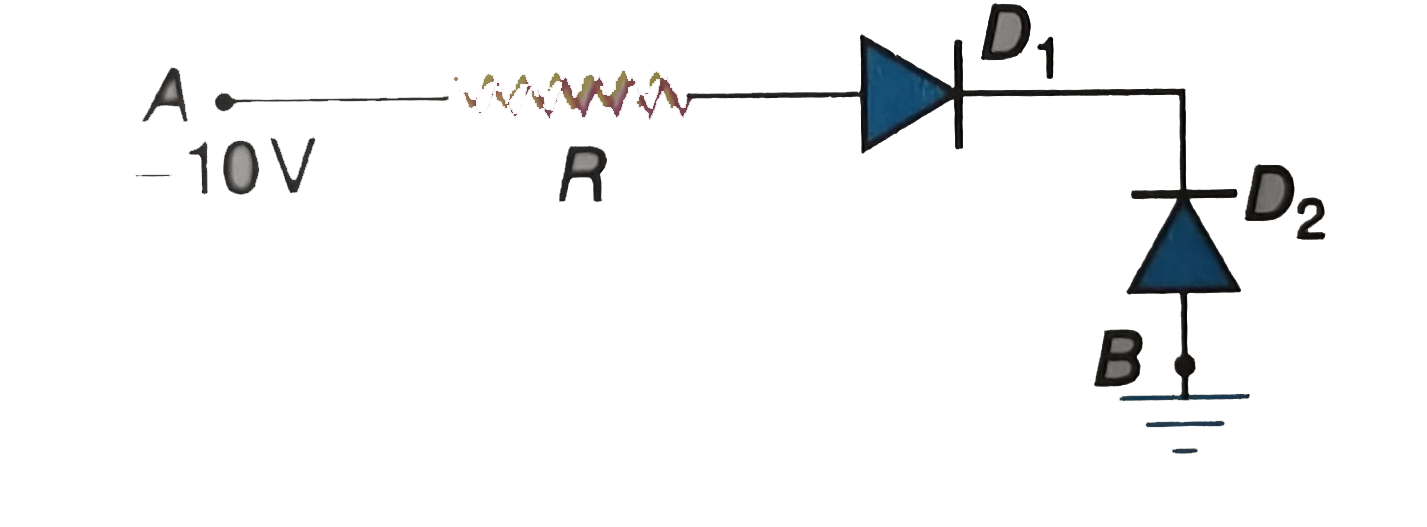Carbon silicon and germanium have four valence electrons each. These are characterised by valence and conduction bands separated by energy band gap respectively equal to (Eg)C,(Eg)Si and (Eg)Ge which of the following statements is true?Solution in Bengali
(Eg)Si<(Eg)Ge<(Eg)C
(Eg)C<(Eg)Ge<(Eg)Si
(Eg)C>(Eg)Si>(Eg)Ge
(Eg)C=(Eg)Si=(Eg)Ge
The correct Answer is:C
Step by step video, text & image solution for Carbon silicon and germanium have four valence electrons each. These are characterised by valence and conduction bands separated by energy band gap respectively equal to (E_(g))_(C), (E_(g))_(Si) " ""and" " "(E_(g))_(Ge) which of the following statements is true? by Physics experts to help you in doubts & scoring excellent marks in Class 12 exams.
Updated on:21/07/2023Topper's Solved these Questions
- SEMICONDUCTORS AND ELECTRONICS Book:CHHAYA PUBLICATIONChapter:SEMICONDUCTORS AND ELECTRONICS Exercise:NCERT EXEMPLAR QUESTIONS WITH ANSWER HINT (Single Option Correct )
Explore 6 Videos
- SEMICONDUCTORS AND ELECTRONICS Book:CHHAYA PUBLICATIONChapter:SEMICONDUCTORS AND ELECTRONICS Exercise:NCERT EXEMPLAR QUESTIONS WITH ANSWER HINT (Multiple Options Correct )
Explore 1 Video
- SEMICONDUCTORS AND ELECTRONICS Book:CHHAYA PUBLICATIONChapter:SEMICONDUCTORS AND ELECTRONICS Exercise:HIGHER ORDER THINKING SKILL (HOTS) QUESTIONS
Explore 18 Videos
- REFRACTION OF LIGHTBook:CHHAYA PUBLICATIONChapter:REFRACTION OF LIGHTExercise:CBSE SCANNER
Explore 11 Videos
Similar Questions
In Fig 1.50 assuming the diodes to be ideal

View SolutionConsider an n-p-n transistor with its base -emitter junction forward biased and collector -base junction reverse biased. Which of the following statements are true ?
View SolutionWhen a semiconductor is irradiated by light of definite wavelength its resistance decreases.Exaplain why.
View SolutionFor the same angle of incidence, the angles of refraction in three different media A, B and C are15∘,25∘ and 35∘ respectively. In which medium, will the velocity of light be minimum ?
View SolutionCarbon , silicon and germanium have four valence elcectrons each . These are characterised by valence and conduction bands separated by energy band - gap respectively equal to (Eg)c(Eg)si and (Eg)Ge. Which of the following statements ture ?
View SolutionCarbon, silicon and germanium atoms have four valence electrons each. Their valence and conduction bands are separated by energy band gaps represented by (Eg)C,(Eg)Si and (Eg)Ge, respectively. Which one of the following relationship is true in their case?
View Solutionकार्बन, सिलिकॉन और जर्मेनियम, प्रत्येक में चार संयोजक इलेक्ट्रॉन हैं। इनकी विशेषता ऊर्जा बैंड अंतराल द्वारा पृथक्कृत संयोजकता और चालान बैंड द्वारा दी गई है जो क्रमश: (Eg)C,(Eg)Si
View SolutionCarbon, silicon and germanium have four valence electrons each. These are characterised by valence and conduction bands separated by energy band gap respectively equal to ( E _(g))_(c ) , ( E_(g))_(Si ) and ( E_(g ))_(G e ) .Which of the following statements is true ? (a) (E_(g))_(Si) lt ( E_(g))_(Ge ) lt ( E_(g))_(C ) (b) ( E_(g))_(C ) lt ( E_(g))_(Ge ) gt (E_(g))_(Si) (c ) (E_(g))_(C ) gt ( E_(g))_(SI) gt ( E_(g))_(Ge ) (d) ( E_(g))_(C ) = ( E_(g))_(Si) = ( E_(g))_(Ge )
View SolutionCarbon, silicon and germanium atoms have four valence electrons each. Their valence and conduction bands are separated by energy band gaps represented by (Eg)C,(Eg)Si and (Eg)Ge, respectively. Which one of the following relationship is true in their case?
View SolutionCarbon, silicon and germanium atoms have four valence electrons each. Their valence and conduction bands are separated by energy band gaps represented by (Eg)C,(Eg)Si and (Eg)Ge, respectively. Which one of the following relationship is true in their case?
View SolutionCarbon silicon and germanium have four valence electrons each these are characterised by valence and conduction bands separated by energy band gap respectively equal to which of the following statement is true
(a) (Eg)Si<(Eg)Ge<(Eg)c
(b)(Eg)c<(Eg)Ge<(Eg)Si
(c )(Eg)c>(Eg)Si>(Eg)Ge
(d)(Eg)c=(Eg)si=(Eg)Ge
View SolutionCarbon, silicon and germanium have four valence electrons each . These are characterised by valence and conduction bands separated by energy band gap respectively equal to (Eg)C,(Eg)Si and (Eg)Ge . Which of the following statements is true ?
View SolutionCarbon, silicon and germanium have four valence electrons each. These are characterised by valence and conduction bands separated by energy band gap respectively equal to (E_(g))_(C),(E_(g))_(Si) and (E_(g))_(Ge) . Which of the following statements is true?
View SolutionCarbon, silicon and germanium have four valence electrons each. These are characterised by valence and conduction bands separated by energy band gap respectively equal to (E_(g))_(C),(E_(g))_(Si) and (E_(g))_(Ge) . Which of the following statements is true?
View SolutionCarbon, silicon and germanium have four valence electrons each. These are characterised by valence and conduction bands separated by energy band gap respectively equal to 1(E_(g))_(c), (E_(g))_(s1) and (E_(g))_(G) ,· Which of the following statement is true ?
View Solution